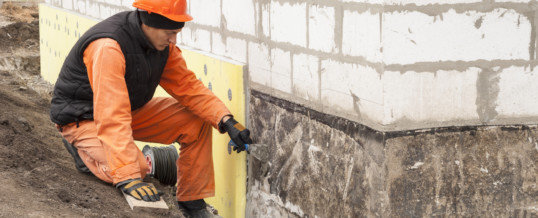
A serious horizontal crack in your foundation can cause your foundation to cave. This can lead to spending thousands of dollars to repair it. No one likes damage done to their home or the heavy costs that come with it.
Keep in mind, the longer you wait to get something repaired, the greater the cost will be. Below we’ll review carbon fiber foundation crack repair.
What Is Carbon Fiber Crack Repair?
Carbon fiber crack repair helps prevent cracks from getting larger. Additionally, it keeps your walls from moving inward. Carbon fiber strips help suspend the movement of the cracked wall as it’s a very rigid material.
The type of resin used with the carbon fiber strips will determine how strong those strips are. The most common form of resin is epoxy. Polyurethane, vinyl ester, and polyester are some of the other types of resin used.
Advantages of Carbon Fiber Crack Repair
First, as carbon fiber is lightweight it’s fairly easy to install. This makes it a quicker repair job compared to other forms of crack repair. A carbon fiber repair job can be finished in a day if the crack isn’t too large.
Second, carbon fiber is really strong, even stronger than steel (of the same weight). You’ll never have to worry about the material breaking, corroding, or stretching.
Third, as it’s a strong material, it doesn’t need to be maintained. You won’t have to worry about any further maintenance costs.
Fourth, it tends to be cheaper than other forms of crack repair (such as steel beam crack repair).
Finally, after you’ve applied the carbon fiber to the crack/wall it doesn’t protrude out of the wall very far. This means, if you paint over the carbon fiber strip, it’ll be barely noticeable. Moreover, since it isn’t a thick material (like a steel beam) it won’t take up any necessary space in your basement.
Disadvantages of Carbon Fiber Crack Repair
Carbon fiber crack repair is best used on walls that haven’t moved inward (aka deflected or bowed) too far. Typically, you’ll want to use this method if the deflection is two inches or less. When the deflection is more severe, you may need to opt for steel beams instead.
What’s more, it isn’t advisable to fix the cracks yourself, especially as the cracks get larger. We live in an age where DIY projects are the growing trend, but they aren’t always the best course of action.
If the crack is larger than you realize you may not properly seal it leading to more damage. On top of that, if you’ve never repaired a cracked wall before you may not know how to properly seal the crack(s). You could end up spending more money on crack repairs.
A professional will know how to accurately measure the crack(s) and how much the wall has moved. They’ll be able to recommend the best type of crack repair and give you an appropriate estimate. They’ll make sure the job gets done right the first time.
Seek Professional Help
If you’re worried about doing it on your own, or if the cracks are large, you can always contact a professional to aid you. They’ll make sure the job gets done right the first time.
They’ll seal the crack and prevent any further water damage from happening. If any future leaks arise, the waterproofing system they put in place will redirect the water.
Below we’ll list the steps a professional contractor would take:
- They’ll turn the crack into a v-shaped groove. This groove will help the cement properly fill the crack and remain intact should the crack move.
- Next, they’ll seal the crack with hydraulic cement.
- They’ll apply Heavy Duty Armored Vinyl (carbon fiber strips) to the crack. This will help prevent any seepage. What’s more, if any leaks happen in the future, this vinyl will help direct the water to the pressure relief drain.
- Finally, if your home doesn’t already have a pressure relief drain, they’ll supply one for you.
Consult a Civil Engineer
Cracks in your walls can vary in their depth and severity. It’s important to consult a civil engineer before you start repairs. They’ll be able to give you a full engineer report.
The civil engineer will examine the crack(s) to determine how it was formed and what steps should be taken to fix it. After, they’ll review their findings. They’ll recommend what your best options are based on your financial situation.
Once the method is chosen, they’ll provide specifications for the contractor to follow. For example, plans, drawings, and materials needed. They’ll help you find a contractor and buy the materials you need (if not provided by the contractor).
Moreover, the civil engineer will ensure the contractor has all the necessary contract documents.
After the contractor is chosen the civil engineer will make periodic visits to your home. They’ll ensure everything is running smoothly and according to the specification requirements. They’ll speak with the contractor to make sure they interpret the specifications properly.
Once the project is over the civil engineer will do one final inspection.
Foundation Crack Repair, Do You Need It?
Foundation crack repair can be a quick fix, or something far more tedious. Depending on the severity of the crack will determine the amount of work that needs to be done.
For more complicated cracks, it may be your best bet to seek out professional help. They’ll have a better idea of what they’re doing, and they’ll do the job right the first time.
Review our blog to learn more about foundation crack repair.
ShareFEB
